Messier 50
 Click image for full size version
Click image for full size version
March 7, 2021
This image shows Messier 50 (M50), a pretty open cluster in Monoceros, the Unicorn. Its more than 500 confirmed and 100 probable stars have a combined mass of more than 285 times that of the Sun. The cluster is about 18 light years across, but being almost 2,900 light years away, it only covers about half the Moon’s width in our sky. M50 is quite old for an open cluster, at approximately 140 million years.
Many of the objects in the Messier Catalogue were not discovered by Charles Messier. M50 was discovered by G.D. Cassini in 1711, and independently rediscovered by Messier more than six decades later.
This image was acquired under a nearly full Moon. Open clusters are good imaging targets on otherwise excellent nights affected by moonlight.
Tekkies:
Acquisition, focusing, and control of Paramount MX mount (unguided) with TheSkyX. Focus with Optec DirectSync motor and controller. Automation with CCDCommander. Equipment control with PrimaLuce Labs Eagle 3 Pro computer. All pre-processing and processing in PixInsight. Acquired from my SkyShed in Guelph. Average transparency and seeing. Data acquired February 26 – March 2, 2021 under a nearly full moon.
Luminance: Sky-Watcher Esprit 150 f/7 refractor and QHY 16200-A camera with Optolong UV/IR filter
Chrominance: Takahashi FSQ-106 ED IV @ f/5 and QHY367C Pro one-shot colour camera with Optolong UV/IR filter
Chrominance: 13 x 5m = 1hr05m
Total: 1hr 50m
Data Reduction and Initial Processing
Preprocessing: The WeightedBatchPreProcessing script was used to create a Luminance master frame (from the mono camera). The same script and DrizzleIntegration were used to make a 1x CFA-Drizzled RGB master frame (from the one-shot colour camera). The RGB master was registered to the Luminance master using StarAlignment.
Gradient Removal: DBE was applied to L and RGB masters using Subtraction.
Colour
Colour Balancing: Colour was balanced with ColorCalibration.
Linear Noise Reduction: MultiscaleLinearTransform was used to reduce noise in the background areas, using an internal mask to protect bright structures. Layer settings for threshold and strength: Layer 1: 5.0 0.85, 2 iterations; Layer 2: 3.5, 0.75, 2 iterations.
Stretching: HistogramTransformation was applied to make a pleasing, bright image, with background set to an intensity of approximately 0.10.
Lightness
Linear Noise Reduction: MultiscaleLinearTransform was used to reduce noise in the background areas, using an internal mask to protect bright stars. Layer settings for threshold and strength: Layer 1: 3.0 0.85, 1 iterations; Layer 2: 2.0, 0.75, 2 iterations.
Stretching: HistogramTransformation was applied to make a pleasing, bright image, with background set to an intensity of approximately 0.10.
Combining Lightness and Colour Images
LRGB Combination: The lightness image was applied to the RGB image using LRGBCombination with default settings.
Additional Processing
Nonlinear Noise Reduction: TGVDenoise was used in L*a*b* mode to reduce noise with a mask used to target the background areas and protect the stars (max. 1,000 iterations and convergence selected for both lightness and chrominance).
Final Steps: Background and star brightness, contrast, and colour saturation were adjusted in several iterations using CurvesTransformation with masks as required. ICCProfileTransformation (sRGB IEC61966-2.1; Relative Colorimetric with black point compensation) was applied prior to saving in jpg format.

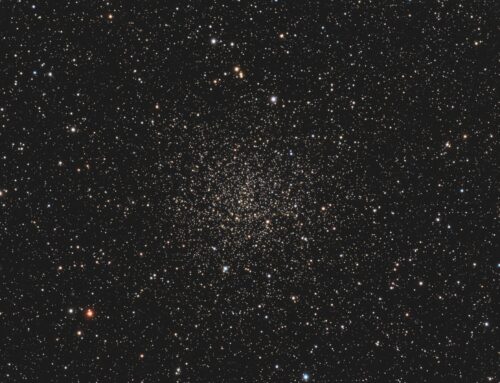
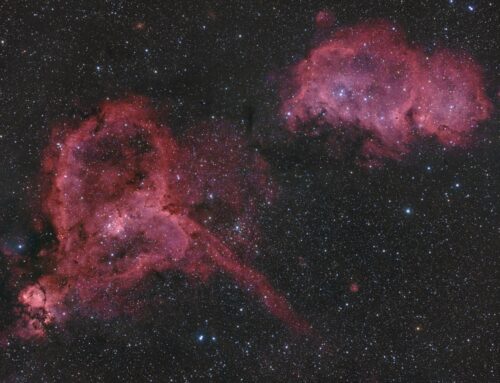
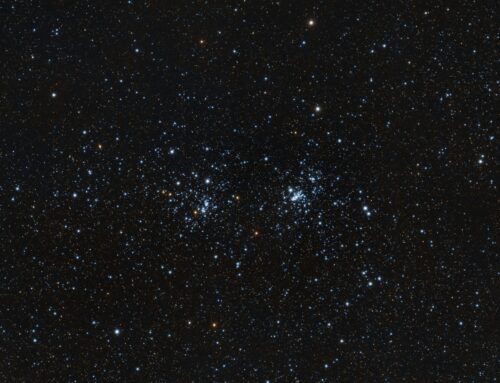
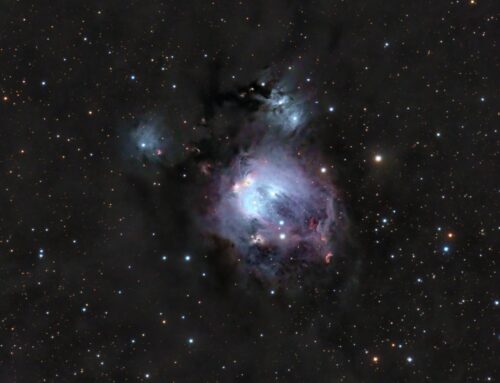
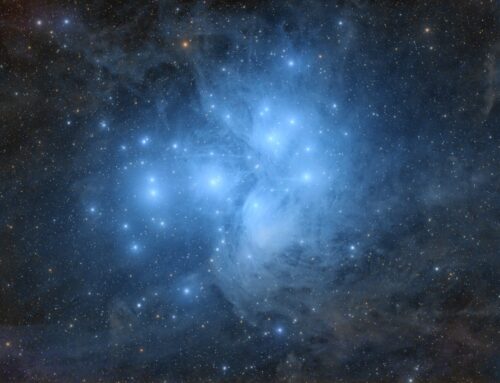
Very nice star colours!!